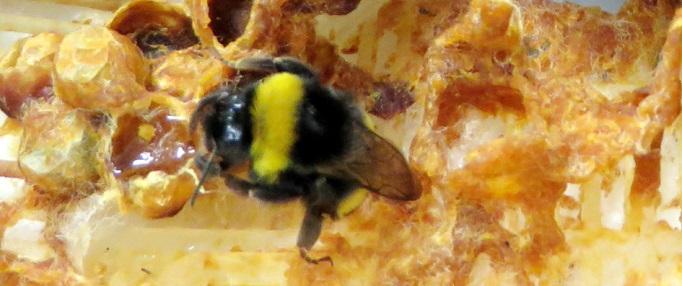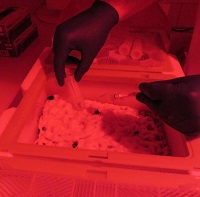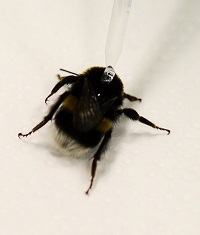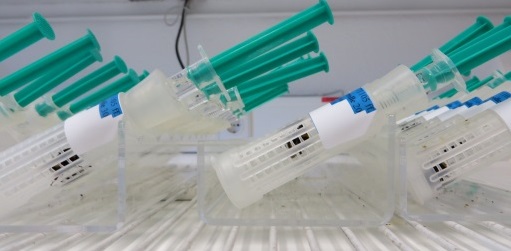- Your Product Type
- Your Study Type
- Aquatic Ecotoxicology
- Aquatic Invertebrates
- OECD 202: Daphnia sp., Acute Immobilisation Test
- OECD 211: Daphnia magna Reproduction Test
- OECD 235: Chironomus sp., Acute Immobilisation Test
- OECD 218/219: Sediment-Water Chironomid Toxicity Test Using Spiked Sediment/Spiked Water
- OECD 233: Sediment-Water Chironomid Life-Cycle Toxicity Test Using Spiked Water or Spiked Sediment
- OECD 225: Sediment-water Lumbriculus Toxicity Test Using Spiked Sediment
- OECD 242: Potamopyrgus antipodarum Reproduction Test
- OECD 243: Lymnaea stagnalis Reproduction Test
- Fish and other vertebrates
- OECD 203: Fish, Acute Toxicity Test
- OECD 215: Fish Juvenile Growth Study
- OECD 212: Fish, Short-term Toxicity Test on Embryo and Sac-fry Stages
- OECD 231: The Amphibian Metamorphosis Assay
- OECD 236: Fish Embryo Acute Toxicity Test
- OECD 210: Fish, Early-life Stage Toxicity Test
- OECD 229 Fish Short Term Reproduction Assay and OECD 230 21-day Fish Assay
- OECD 240 Medaka Extended One Generation Reproduction Test (MEOGRT)
- OECD 248: Xenopus Eleutheroembryonic Thyroid Assay
- OPPTS 850.1500: Fish Life Cycle Toxicity Test
- OÈCD 234 Fish sexual development test
- Aquatic plants
- Analytical Dose Verification
- Aquatic Invertebrates
- Chemistry
- Biodegradation Studies
- Analytical Chemistry Studies and Residues
- Physical-Chemical Properties Studies
- Storage Stability Studies
- OPPTS 830.6302, OPPTS 830.6303,and OPPTS 830.6304: Physical State, Colour and Odor at 20 °C and at 101.3 kPa
- EU A.1: Melting temperature/range
- EU A.2: Boiling temperature
- EU A.3: Relative density (liquids and solids)
- EU A.4: Vapour pressure
- EU A.5: Surface tension
- EU A.9: Flashpoint
- EU A.10: Flammability (solids)
- EU A.12: Flammability (contact with water)
- EU A.13: Pyrophoric properties of solids and liquids
- EU A.16: Relative self-ignition temperature for solids
- EU A.17: Oxidising properties
- OECD 114: Viscosity of Liquids
- Environmental Fate
- Transformation in Soil
- Transformation in Water
- Transformation in Manure
- Adsorption on Soil and Sewage Sludge
- Bioaccumulation and Bioconcentration
- Terrestrial Ecotoxicology
- Non-target Arthropods
- Non-target arthropod testing with the parasitic wasp (Aphidius rhopalosiphi)
- Non-target arthropod testing with the lacewing (Chrysoperla carnea)
- Non-target arthropod testing with the ladybird beetle (Coccinella septempunctata)
- Non-target arthropod testing with the predatory bug (Orius laevigatus)
- Non-target arthropod testing with the predatory mite (Typhlodromus pyri)
- Non-target arthropod testing with the rove beetle (Aleochara bilineata)
- Non-target arthropod testing with the carabid beetle (Poecilus cupreus)
- Non-target arthropod testing with the wolf spider (Pardosa spec.)
- Soil Organisms
- Honey Bees and other Pollinators
- OECD 213/214: Honey bees, Acute Oral and Acute Contact Toxicity Test
- OECD 245: Honey Bee (Apis Mellifera L.), Chronic Oral Toxicity Test (10-Day Feeding)
- OECD 237: Honey Bee Larval Toxicity Test, Single Exposure
- OECD 239: Honey Bee Larval Toxicity Test
- EPPO 170: Honey Bee Field Study – do plant protection products effect honey bee colonies?
- Oomen et al. 1992: Honey Bee Brood Feeding Study
- OECD 75: Honey Bee Brood Test under Semi-field Conditions in Tunnels
- OECD 246/247 Acute Oral and Contact Toxicity to the Bumblebee, Bombus terrestris L.
- Solitary Bee Acute Contact Toxicity Study in the Laboratory (Osmia sp.) Solitary Bee Acute Oral Toxicity Study in the Laboratory (Osmia sp.) (protocols for ringtests with solitary bees recommended by the non-Apis working group)
- SANTE/11956/2016 rev.9 Residue trials for MRL setting in honey
- Non-target plants
- OECD 208: Terrestrial Plant Test - Seedling Emergence and Seedling Growth Test
- OECD 227: Terrestrial Plant Test - Vegetative Vigour Test
- OCSPP 850.4100: Seedling Emergence and Seedling Growth
- OCSPP 850.4150: Vegetative Vigor
- EPPO PP 1/207(2): Efficacy evaluation of plant protection products, Effects on succeeding crops
- Field Studies
- Non-target Arthropods
- Ecological Modelling
- Quality Assurance
- Testing of Potential Endocrine Disruptors
- Aquatic Ecotoxicology
- News
- Company
- Career
- Contact
OECD 246/247 Acute Oral and Contact Toxicity to the Bumblebee, Bombus terrestris L.
Bumblebees (Bombus terrestris L.) can be affected by pesticide residues on plants, via oral and contact intake, in the course of application during farming practice. As the proposed use pattern of pesticides indicates a possible exposure of bumblebees, this study shall be useful for the registration of the pesticide in question.

Study Design
Test organisms
The test is conducted with adult female Bombus terrestris worker bees from a commercial bumblebee company.
 Course of the test
Course of the test
At first the bumblebees are collected form the nest under red light without the use of anaesthetics. After that the bumblebees are kept in test units. Differentiation into treatment groups are carried out visually by body size. Each bumblebee is weighed individually after anesthetization with CO2. Before application the bees are acclimatised to the test conditions for 12 - 24 hours (25 °C, 60 %).
In the oral test bees are starved for 2 - 4 hours and then fed with treated or untreated feeding solution for a period not exceeding 6 hours via syringes. The exact food uptake is calculated by the syringe weight before and after the application period.
In the contact test the bees are exposed to the test item by dorsal application of a 5 µL droplet on the bumblebee thorax.
The test is regularly finished after 48 hours. In case of delayed mortality onset the test can be prolonged up to 96 hours.
 Assessments
Assessments
- Mortality: Number of dead bees after 4 (±0.5 h) hours (first day), 24 and 48 (±2 h) hours, (72 and 96 (±2 h) hours, if prolonged).
- Behavioural abnormalities: Signs of intoxication are recorded throughout the trial (e.g. affected, moribund, cramps)
- Food uptake (oral test): The exact uptake of treated food is calculated.
Validity criteria
Control and reference item groups ensure that the test results show high accuracy and trueness. Each test is reliably validated by the following criteria:
- Mortality in the control group: ≤ 10 % at test end
- Mortality in the reference item group: ≥ 50 % at test end
Endpoints
LD50; NOED
Guidelines and Literature
- Van der Steen (2001): Review of the methods to determine hazards and toxicity of pesticides to bumblebees
- OECD 246: OECD Guideline for the Testing of Chemicals, Bumblebee, Acute Contact Toxicity Test (2017)
- OECD 247: OECD Guideline for the Testing of Chemicals, Honeybees, Bumblebee, Acute Oral Toxicity Test, (2017)
- Current recommendations of the non-Apis ring test group (2014)

